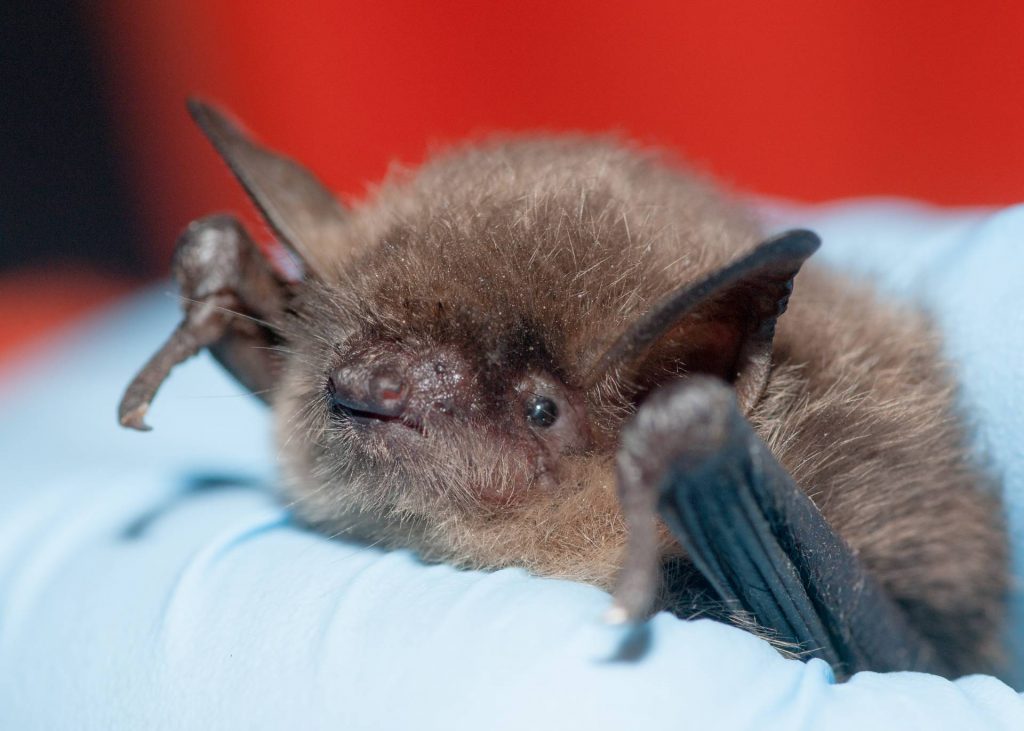This month’s mammal is fang-tastic!
11/25/2019
November’s monthly mammal gets a pretty bad rap – often feared as sinister creatures of the night. In reality, they are wonderfully beneficial, providing invaluable services to both natural ecosystems and human economies around the world.
This month, we celebrate bats!
The Earth without bats would be a different (and poorer) place. More than 1,390 species of bats around the world are playing ecological roles that are vital to the planet. Many consume vast amounts of insects, including some of the most damaging agricultural pests. Others pollinate valuable plants, ensuring the production of fruits that support ecosystems and local economies. Even bat droppings are valuable as a rich natural fertilizer.
Mexico boasts one of the world’s greatest diversities of bat species. Here are a few found on our Monte Mojino Reserve in Sonora!
Mexican Long-Tongued Bat
The Mexican long-tongued bat (Choeronycteris mexicana) is found in the southwestern United States through most of Mexico, and in El Salvador and Honduras. It lives in a variety of habitats, but is most common in semi-desert and desert environments.
The species feeds on nectar and pollen from agaves and other plants. Its tongue can extend up to a third of its body length, a feature which makes it uniquely equipped to reach nectar deep inside an agave or cactus blossom.
The Mexican long-tongued bat is considered a keystone species because of its role in helping pollinate various plants and cacti within its habitat. The species pollinates and disperses seeds for about 60 species of agave plants!

Yuma myotis by Daniel Neal. Licensed under the terms of the cc-by-2.0.
Yuma Myotis
The Yuma myotis (Myotis yumanensis) is found in western North America in habitats ranging from juniper and riparian woodlands to desert regions near open water.
The species is an efficient insectivorous feeder that begins foraging at dusk and usually finishes two hours after sunset. Like most bats, it locates insects in flight by emitting ultrasonic sounds (echolocation).
All insectivorous species of bats are a safe and sensible means of pest control. The Yuma myotis can consume up to half of its weight every night feeding on moths, beetles, flies, and other insects.

Nature and Culture’s Monte Mojino Reserve
Lesser Long-Nosed Bat
The lesser long-nosed bat (Leptonycteris yerbabuenae) is one of three North American species that feeds exclusively on the fruit and nectar of night-blooming cacti including organ pipe, as well as many species of agave. The species is found in southern Arizona and southwestern New Mexico, and throughout Mexico and Baja California.
These bats are the main pollinators of Century Plants (Agave sp.), which are used to make tequila and other products. The relationship between bats and tequila may seem obscure at first, but the bat-plant association is so strong that the disappearance of one would threaten the survival of the other.
We hope our monthly mammal changed your mind about these fang-tastic animals. After all, the scariest thing of all would be if bats disappeared!
This season, you can protect Latin America’s bats and other mammals – with twice the impact! We invite you to join our end-of-year campaign where your gift will be matched dollar-for-dollar through December 31.


